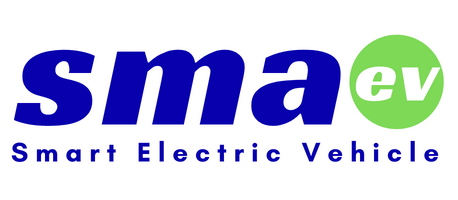The electric vehicle market is expected to continue its growth this year, with an estimated compound annual growth rate (CAGR) of approximately 20% by 2030, reaching around 64 million units per year1. Benefitting from the substantial increase in semiconductor demand per vehicle, the automotive semiconductor industry is poised for vibrant growth in the coming years, promising an exhilarating ride of growth and innovation.

Unveiling Market Momentum
The automotive sector continues to fuel expectations. For the second year in a row, semiconductor executives see the automotive sector as the most important sector driving revenue over the next year, according to the results of the 19th Annual KPMG Global Semiconductor Outlook. After topping the survey for the first time last year as the most important revenue driver, automotive again placed as the top revenue driver for the industry in 2024. The computerization and electrification of automotive vehicles have helped continue to fuel growth across the semiconductor industry. “The more advanced the vehicle, the more chips it requires,” said KPMG Global and U.S. Technology, Media & Telecommunications Leader, Mark Gibson.
Driven by the increasing demand for advanced infotainment, safety features, performance enhancement, and fuel efficiency, the automotive semiconductor market is revving its engines. From $71.6 billion in 2023, based on Mordor Intelligence’s report3, it’s projected to shift gears and hit a thrilling $140 billion by 2028, boasting a compound annual growth rate (CAGR) of 14.43% during the forecast period (2023-2028). Components under the hood include processors, sensors, storage solutions, integrated circuits, and discrete power components.
The Crucial Role of Automotive Semiconductors
The automotive industry is increasingly focused on achieving goals of greater environmental friendliness, safety, and intelligence. This trend has propelled the widespread adoption of electric vehicles, advanced driver-assistance systems (ADAS), and intelligent cockpit/infotainment systems. This transformation has accelerated the electrification and intelligence of automobiles, driving the demand for AP/MCU/ASIC processors, in-vehicle network equipment, sensors, and power management chips. According to IDC’s research4, the semiconductor market is expected to rebound by approximately 20% by 2024, mainly due to the continuous expansion of ADAS and infotainment systems in the automotive semiconductor field.
According to research from the Automotive Research & Testing Center (ARTC), electronic components in vehicles accounted for about 30% of the total vehicle cost in 2010. However, it is predicted that by 2030, the cost of electronic components in vehicles will rise to 50% of the total cost. Considering the demand for artificial intelligence (AI) technology, this proportion may even be higher.
Taking the number of chips as an example, a traditional automobile typically required approximately 200 to 300 chips in the past. However, this number is expected to rise to over 2,000 chips in the future. According to research by IEK, it is predicted that global electric vehicle sales will reach 50 million units by 2040. Based on this forecast, it can be estimated that over 100 billion chips will be needed annually by then, presenting remarkable business opportunities.
Revolution Under the Hood
Shaping the Future of Electric Vehicles with Silicon Carbide (SiC) and Gallium Nitride (GaN) Factors such as range, charging efficiency, and price continue to influence consumers’ willingness to switch to electric vehicles. In terms of material development trends, the extensive use of silicon carbide (SiC) and gallium nitride (GaN) materials has the potential to achieve lightweighting, low losses, high efficiency, and high power density, bringing a glimmer of hope to the acceleration of electric vehicle adoption.
Due to its efficiency and thermal conductivity, silicon carbide has become an important material for electric vehicle charging and on-board power systems. Meanwhile, gallium nitride power semiconductors offer high-efficiency, high-power-density powertrain solutions, enhancing the range and charging efficiency of electric transportation while reducing overall material costs.
According to McKinsey’s statistical analysis, the silicon carbide market is projected to reach approximately $2 billion, with an estimated compound annual growth rate (CAGR) of around 26% by 2030, reaching approximately $11 billion to $14 billion. Currently, the silicon carbide market remains highly concentrated, with a few manufacturers supplying around 60% of the market. Furthermore, the current vertical integration of silicon carbide wafer and component manufacturing can increase yields by approximately 5% to 10% and increase profits by approximately 10% to 15%. The shift towards 800-volt vehicles and the increasing demand for SiC MOSFETs are driving automotive original equipment manufacturers (OEMs) to adopt silicon carbide more actively.
Another exciting trend is the increased utilization of 8-inch wafers, with an expected market penetration rate of 50% by 2030. Once technical challenges are overcome, 8-inch wafers can bring better profit margins to manufacturers by reducing edge losses, increasing automation levels, and leveraging silicon manufacturing depreciation assets. The profitability benefits of this transformation are estimated to be between 5% to 10%, depending on the level of vertical integration.
The electric vehicle semiconductor industry is hitting top gear, driven by the surging demand for electric vehicles and the evolution of semiconductor materials. We can expect the growing demand for automotive electronic components and chips will lead the industry towards larger-scale production and innovation to meet the ever-expanding market demand.
References
- New silicon carbide prospects emerge as market adapts to EV expansion
- Semiconductor Execs See Automotive as No. 1 Revenue Driver for Second Year in a Row
- Automotive Semiconductor market size – Mordor Intelligence
- The Semiconductor Market Will Recover in 2024 With an Annual Growth Rate of 20%, Says IDC





